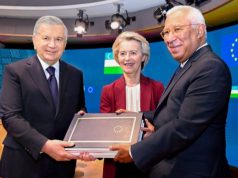By Hanif Qamar
What will be the outcome of the Israel-Iran war? What is the objective of this war, and will that objective be achieved? These questions are currently the focal point of the global political discourse. Most analyses and commentaries are revolving around these very questions.
In my opinion, the global political establishment has already made some critical decisions regarding the Middle East. According to these decisions, a new political and geographical map of the region is to be drawn. Work on this plan has been underway for some time. The United States and its allied forces have systematically eliminated their opposing powers in the Middle East. The starting point of this plan was the elimination of Hamas and Hezbollah, followed by the establishment of favorable governments in Syria and Iraq.
Now, the only remaining major force in the region that opposes the U.S. and Israel is Iran. Under its religious leadership, Iran has been rapidly moving toward acquiring nuclear power, a program that has enjoyed moral and political support from Pakistan. Just a few days ago, Prime Minister Shehbaz Sharif and Army Chief General Asim Munir stood alongside Iran’s leadership in Tehran and gave a clear statement in support of Iran’s nuclear program. This was a major political development in the region against the interests of the U.S. and Israel.
Following this development, the implementation of the U.S. and Israel’s proposed plans for the Middle East has accelerated dramatically. The global political establishment can no longer tolerate the presence of a hostile state in the region—especially one with nuclear capabilities. Therefore, an attack was launched on Iran, targeting its military and scientific leadership. The next target is its religious and political leadership. The plan is to bring about regime change in Iran and install a pro-American and pro-Israeli government. Once this is done, the developmental projects envisioned by Trump for the Middle East will begin implementation.
After the regime change, Iran will have a new liberal and progressive leadership that will handle the nuclear program in alignment with American expectations. This regime change plan is also supported by some brotherly Gulf countries. Pakistan, on the other hand, is working cautiously to derail this plan and is engaged in careful diplomacy with like-minded nations. Pakistan may not be able to completely stop this regime change, but it does have the capability to delay it. And it appears this strategy will be pursued.
Nevertheless, Iran is also facing serious internal challenges. There exists an internal environment against Iran’s religious leadership, which is being exploited by the U.S. and Israel. If the regime change succeeds, a liberal and progressive system similar to that of Reza Shah Pahlavi will be established in Iran—one that serves American and Israeli interests.
This plan leaves no room for a two-state solution. In the proposed scheme, there is only one state: Israel. The order for Palestinians is to settle in any Muslim country because there is no place for them in Palestine. There, Trump’s developmental projects are about to commence.
The blueprint of this new Middle East has been drawn by the U.S. and Israel—but the colors in it have been filled in by the decisions of Muslim rulers who lack wisdom, awareness, and political vision.




